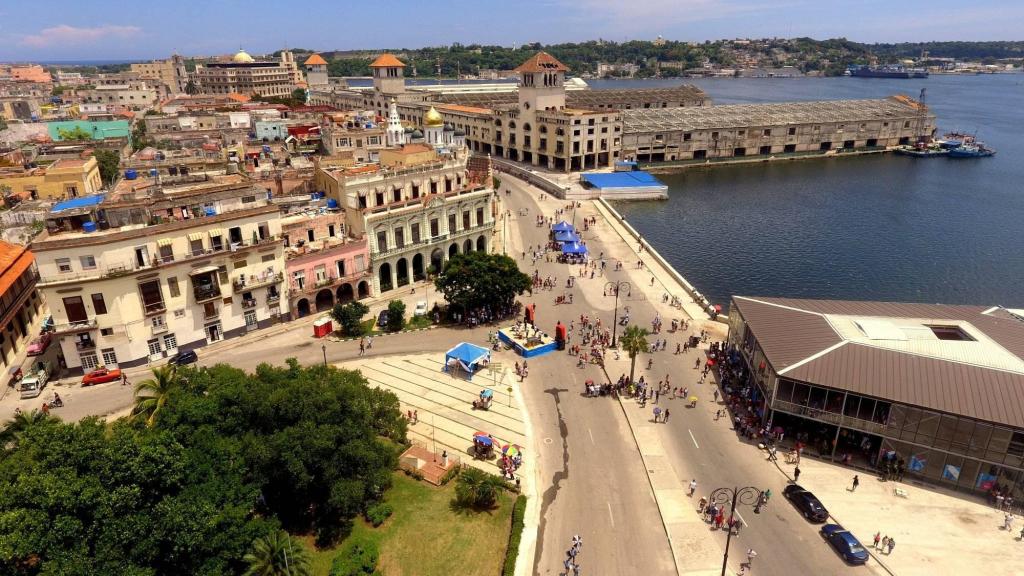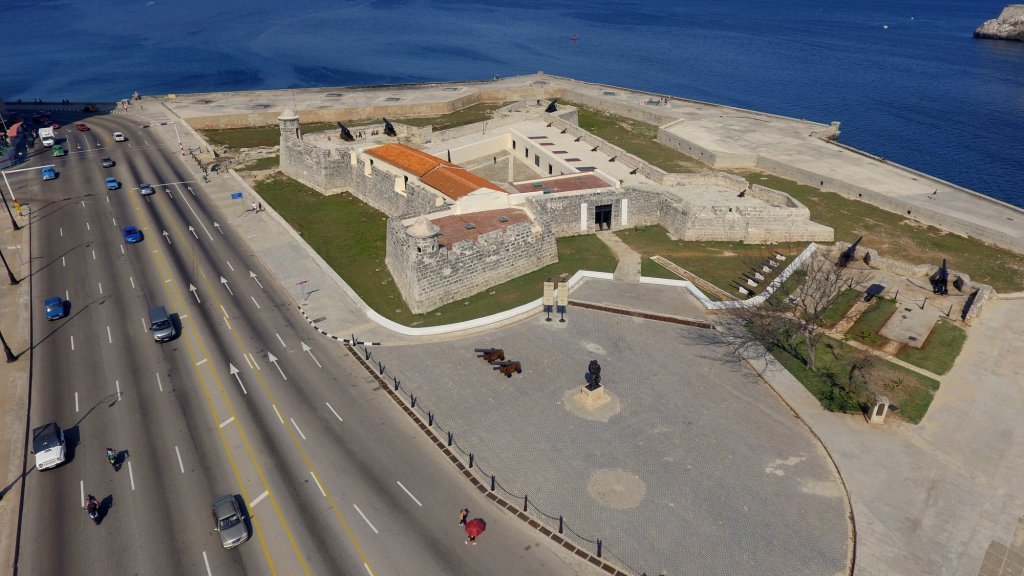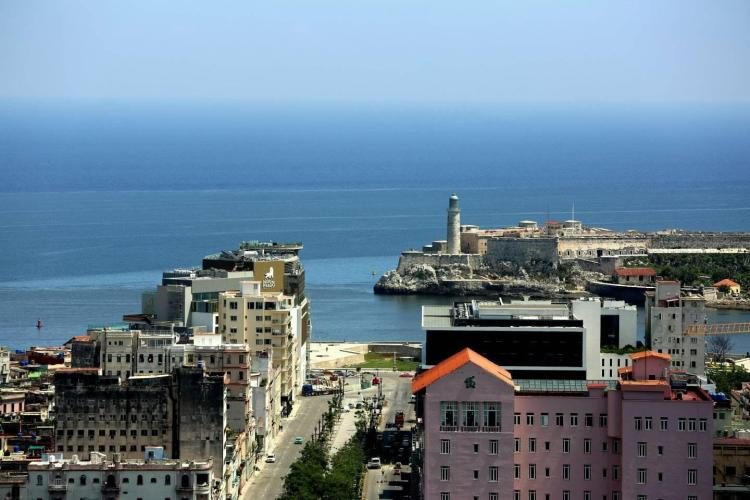This will not be an article on economics, although it will inexorably be related to it.
Cities have become one of the leading actresses of economic development in the world. I heard a colleague, Ricardo Núñez, say a long time ago (2010) that “cities are revitalizing entities of national and even regional economies.” Perhaps today, Singapore with 719 km2 of surface, is the most evident proof of this assertion. That small city state is decisive in an entire region, in one of the most dynamic markets in the world and its extension is less than that of Havana!
As Havanans that we all Cubans are, since Havana is the capital of all, we have been partying because our city turned 500 and we have celebrated it as it should, among other things, because none of us will be present when the city’s millennium is celebrated. And if it has been possible, in addition to the passion and dedication of many men and women who devoted hours and hours to that purpose, it has also been possible because of the seed that was planted and that germinated since long before, ever since around 1925 when Don Emilio Roig de Leuchsenring was conferred the title of City Historian and thirteen years later the Office of the Historic Center was founded.
All that effort grew later and became great thanks to the mind, heart and shoes of Don Eusebio Leal. As early as 1982, UNESCO would recognize it by declaring the Historic Center of Havana a World Heritage Site. But instead of sitting down and taking off his shoes to enjoy recognition, he walked and walked Havana with more vigor and ambition to reach greater goals, turning that recognition into the lever to transform the neighborhood and its inhabitants. This has not been a solely conservationist effort, but rather a purpose of highly inclusive and sustainable social development.
It is likely that many Havanans don’t know that the Historic Center of our city with its 2.14 square kilometers barely comprises 0.3% of the territory of the city (727 km2) and not more than 0.6% of its urbanized area. It is also likely that they barely know that, in its time, it was one of the Cuban territories with the greatest deterioration of its infrastructure, both residential as well as of its basic service networks, such as water and sewage. It is likely that in its time it was the territory with the highest concentration of infrastructure deficits per square meter, if that indicator exists. Even today, after so much effort, that indicator must be very high.
It is in that small territory where the most successful local development project that I have known in Cuba emerged and consolidated. It started with an initial capital of just 25,000 dollars and a loan of 1 million dollars and some assets such as the Ambos Mundos Hotel (which was nowhere near the hotel it is today), a 13-room hostel, the People’s Power construction company, three restaurants, La Mina, El Mesón and El Patio, an architecture workshop of the Ministry of Culture and the Office of the Historian, at that time in the Palace of the Captains General. [1]

In just a few years (2009), total assets reached 1 billion Cuban pesos and the contribution of mercantile societies belonging to the Office of the Historian generated more than 35 million dollars that were redistributed between productive investments in mercantile societies that allowed for making economically sustainable the project, social investments, infrastructure and works for cultural heritage. Today all of Cuba’s tourist routes, even those that do not pass through Havana, in some way cannot escape its charm, dozens of restaurants have turned the neighborhood into a gourmet destination, a great deal of its inhabitants every day discover something new that makes its environment different and its people improve.
Then came other fateful times, still mysterious to me, where several branches were practically cut off from the tree and that almost felled it. The ability that sometimes develops to jeopardize what has been successful in social, economic, political and environmental terms always calls attention. Now it seems that something has been done to rectify this.
But beyond the vicissitudes, the work has remained and perhaps one of the greatest legacies of the Office and the Historian of Havana is the example of how to put together a development project based on building, WITH EVERYONE, a strategic development plan of the territory. Neighborhoods like that of Santo Ángel have reproduced and innovated based on the Office’s model and the projects shared by its inhabitants have transformed the neighborhood, making it richer materially, culturally and spiritually. The same can be said of the Alliance Project for the Plaza Vieja.
Those who have studied the Office’s experience underline some decisive features:
- Relationship between the public and private sectors.
- Fiscal instruments and financial mechanisms.
- Comprehensive management of international cooperation.
- Efficient exploitation of urban land.
- Support and follow up of local enterprises.
But without a doubt, we would have to return to that decree 143 that gave it unprecedented powers if we want to understand well the magnitude of the whole change process; it created the bases for a self-financed rehabilitation, with an institutional organization; a new special administrative regime was established that empowered the Office to know, decide and control issues related to housing, state-owned property, land use, investment process, and others; the Office ceased being an institution subject to the provincial government to subordinate itself to the Council of State; its own legal personality was also recognized; in order to materialize the Decree, a business system made up by the entities that guarantee the financial feedback scheme of the Historic Center was created, capable of leading the process from the strategic integral planning in its broadest environmental sense (economy-society-territory-habitat) to the physical recovery of real estate and urban spaces.

That decree, from the legal point of view, also recognized the work of love and dedication that for tens of years, through imagination and work, Don Eusebio gave to his Havana convinced that the work would make people have faith.
It is true that the worst is to copy mechanically and try to interpolate to other realities an experience, whichever, even more so this of the Historic Center. But for Havana everything would be very good to learn from this successful experience, with its achievements and mistakes, but above all to capture the passion and dedication of its undisputed leader.
Having managed to radiate from those 2.14 square kilometers of his homeland a special way of looking at the whole city, of thinking and feeling it, has been another of his great works.
I don’t know how many experience sharing meetings have been held by other municipalities in the city with the Office of the Historian; I don’t know how many of our municipality presidents have invited those who for years have managed this great project to narrate their experiences; I don’t know how many of the local development teams of the municipalities have gone to learn in situ in that small territory, let’s hope they have all done so. The distances are not great in Havana, nor do we need a visa to get to Old Havana or spend on translators to help us understand what is explained to us. It is also true that not everyone can wear Don Eusebio’s shoes.
Today I can confess that a long time ago, almost lost in the streets of those neighborhoods that I barely knew and were still far from being what they are today, I came across a troop of persons who were almost chasing a man who walked and talked at the same time and was telling a story that for me was incredible about some walls that were in ruins. Because of the curiosity that it awoke in me and the vehemence of his words I joined the group and after a few minutes, those same walls seemed different to me, such was the magic of the description.
Putting soul into the stones has been one of his great abilities and filling his people’s hearts with hope has been perhaps the greatest of his virtues, that’s why the 500 of Havana are by far the 500 of Don Eusebio.
Note:
[1] Today there are municipalities in the city that have more than 30 million Cuban pesos in the Local Development Fund










